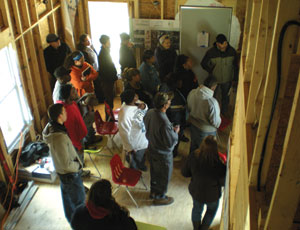Texas leaders from the design community, academia and government will present sessions at the U.S. Green Building Council’s Greenbuild International Conference & Expo in Phoenix this month. Included are:

Dallas safe and green
Zaida Basora, director of building inspection and the building official for the city of Dallas, will discuss her city’s new green building program. She led the city’s green building ordinance task force, which took effect October 1 and pertains to residential and commercial construction. Now, Basora is implementing the new rules and developing training, education and compliance resources for the Building Dallas-Safe and Green program.
“Dallas likes to lead,” says Basora, a founding member of the USGBC North Texas Chapter and chair-elect of its board. “It is important that we look at our built environment and find ways to improve.”
The U.S. Environmental Protection Agency has designated Dallas a nonattainment area, meaning its air quality does not meet the agency’s standards for ozone.
“Building better, with better materials improves our air quality,” Basora says.
The Dallas ordinance established different requirements for buildings of less than 50,000 sq ft and of greater than 50,000 sq ft. Contractors must submit a green-building checklist with the building permits. Building inspectors will review compliance during construction.
“The intent is to have the building inspection department be the certifying agency on the green-building program,” Basora says.
During the first phase, buildings of under 50,000 sq ft must be at least 15% more energy efficient than the 2006 International Energy Conservation Code. Water fixtures must be at least 20% better than outlined in the Energy Policy Act of 1992. They must have cool roofs for slopes of 2:12 or less, and there is an outdoor lighting restriction.
Buildings 50,000 sq ft or larger must follow LEED standards and achieve at least 85% of LEED certified-level credits. Required points include one for water use reduction, and two points for optimizing energy performance, making the structure 14% more energy efficient than the base energy code. Building owners must agree to let utility companies release annual consumption data to the city.
Phase-two takes effect in October 2011. All proposed commercial projects must be LEED-certifiable, Green Built North Texas-certifiable or certifiable under an equivalent...

Post a comment to this article
Report Abusive Comment